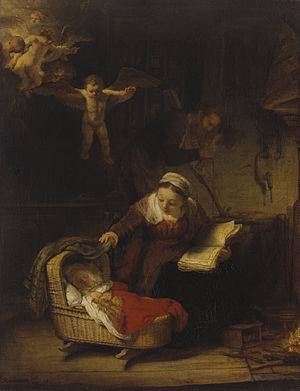ISBN: –
THE ICONOGRAPHY OF REMBRANDT’S DEPICTIONS OF THE HOLY FAMILY
ISBN: –
THE ICONOGRAPHY OF REMBRANDT’S DEPICTIONS OF THE HOLY FAMILY
The main topic of discussion in this thesis is the iconography of two etchings and five
paintings of the Holy Family in a domestic or domestic/workshop setting. All of these works
were, at one time, attributed to Rembrandt van Rijn. Although doubt now has been expressed by
experts as to the authenticity of at least two of the paintings, namely, the Holy Family at Night (c.
1638/40, Amsterdam) and the Holy Family with St. Anne (1640, Paris), these disputed works are
included because of a similarity to the way in which Rembrandt depicted the Holy Family in a
non-Biblical context. If these are not works by Rembrandt’s own hand, they are certainly
variants of his ideas, painted by artists in his circle. The remaining paintings consist of the Holy
Family (1634, Munich), the Holy Family with Angels (1645, St. Petersburg), and the Holy Family
with the Curtain (1646, Kassel). The etchings described are the 1632 Holy Family and the 1654
Virgin with the Cat and the Snake.
Prior to a consideration of the aforementioned works of art, both individually and as a group,
and in order to ascertain whether or not Rembrandt was influenced by earlier artists, a brief
overview of depictions of the Holy Family in imaginary settings is provided, covering a period
from the time of the Renaissance to the beginning of the seventeenth century. Mention also is
made of the influence of restrictions on religious art that followed in the wake of the
Reformation, particularly with respect to the art of the north Netherlands.
Lastly, a look at a few depictions of the Holy Family by Rembrandt’s students and followers
gives some indication of the extent to which they emulated his work. A comparison of the
treatment of the same subject by Peter Paul Rubens and Jacob Jordaens, both of whom worked in
the Catholic environment of the south Netherlands helps to demonstrate Rembrandt’s ability to
meet the requirements of a largely Protestant society through the manner in which he chose to
present the Holy Family.






